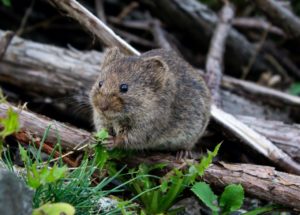Biodiversity, One Health and COVID-19
This is a guest blog by Gabriele Laing, One Health Policy Advisor, SCI Foundation. It was adapted from its original publication on RSTMH’s website.
As a veterinarian I have always been fascinated by the endless variations and diversity of species that exist in the natural world. Nature makes fascinating adaptations to allow each species to occupy its niche…
Why do cows have four stomachs? To allow them to breakdown grass – an otherwise difficult to digest but abundant food!
Why do giraffes have such long necks? To allow them to reach nutrient rich foods at the top of trees without competition!
As charming as these examples are for a children’s ecology lesson, the value of biodiversity has been long overlooked by society. In a world often measured by economics, the value of biodiversity is a difficult thing to measure. In the most basic terms, the natural world is what feeds us, shelters us and heals us.
Medicine from nature
Across the world, countless lives have been saved and improved by medicines derived from the natural world. These natural compounds – often too complex to have been easily discovered in a laboratory – have led to huge impact in both public and veterinary health. The most famous example must be Alexander Fleming’s discovery of penicillin in 1928, – the first antibiotic, from a fungal mould found growing on a dirty laboratory plate.
Since then, discoveries of other life-saving drugs from plants, microbes and animals have been made:
- Aspirin, from the bark of Spiraea plants, was used by the ancient Egyptians for aches and pains. Often described as a wonder drug, the use of aspirin for many conditions, including preventing heart disease and cancer, continues to be researched today.
- Streptomycin – an antibiotic commonly used in both human and veterinary medicine was developed in 1944 from a type of bacteria found in soil and proved highly effective against tuberculosis.
- Quinine, derived from the bark of the cinchona tree, has been used as an antimalarial agent from as early as the 17th century and given rise to other modern antimalarial treatments.
- Analgesics inspired by the Ecuadorian poison dart frog, which delivers any predators a deadly toxin from its skin, offer several hundred times more potent pain relief than morphine.
- Pyrethroid insecticides, developed from pyrethrum flowers, have been widely used on bed nets to reduce vector exposure and in animals to kill ticks and fleas.
The most diverse organisms on the planet are microbes, but it is estimated a mere 5% have been investigated to date. Exploring this diversity may be crucial for new drug discovery and in overcoming the increasing challenge of resistance to antibacterial and anthelmintic drugs that is threatening our ability to treat many conditions.

Genetic biodiversity
The next frontier in medicine from the natural world will likely be in genetics. Recent leaps in our ability to examine the genetic code of species has identified many more variants than were ever suspected. Hidden within this vast genetic biodiversity are surely genes with the potential to heal or resist disease.
At the same time, as searching for exciting new genetic opportunities, it is worth remembering that of the genes we know, we share almost all with the humble mouse. Mice, along with other small mammals, have allowed safety and efficacy testing of numerous essential medicines and chemicals. They have also allowed us to understand hereditary disease better, with the genes for hereditary deafness being discovered in the last 20 years.
The importance of One Health
One Health is a conceptual approach to assessing health that recognises that there are many interconnections between human, animal and environmental health. Although many health benefits can be taken from nature, we should always consider how our actions might impact upon the ecosystem or what risks might arise.
Emerging zoonotic diseases are often viruses that exist in animals which make the jump into humans as a new host – most recently of course COVID-19. In similar emergence events, this has been at the human-wildlife interface. Emergence events are a particular concern where humans interact in ecosystems not previously contacted or where wildlife are put into stressful situations. For example, as might have occurred with hunting bushmeat and the emergence of Ebola or live wildlife being sold on markets in Wuhan as a suspected as the source of the current pandemic.
Unfortunately for many in the field, COVID-19 was not an unexpected occurrence and future emergent disease outbreaks are almost inevitable. Preventing future outbreaks and reducing the likelihood of similar pandemic events is now a priority, and the focus should be on our interaction with the natural world and each other.
An outbreak prevention strategy will utilise the One Health approach, recognising that our interactions with other species and their environment must be better managed. And after deriving so many critical and life-saving health benefits from biodiversity and nature, now is the time to start repaying the favour and protecting our environment.
